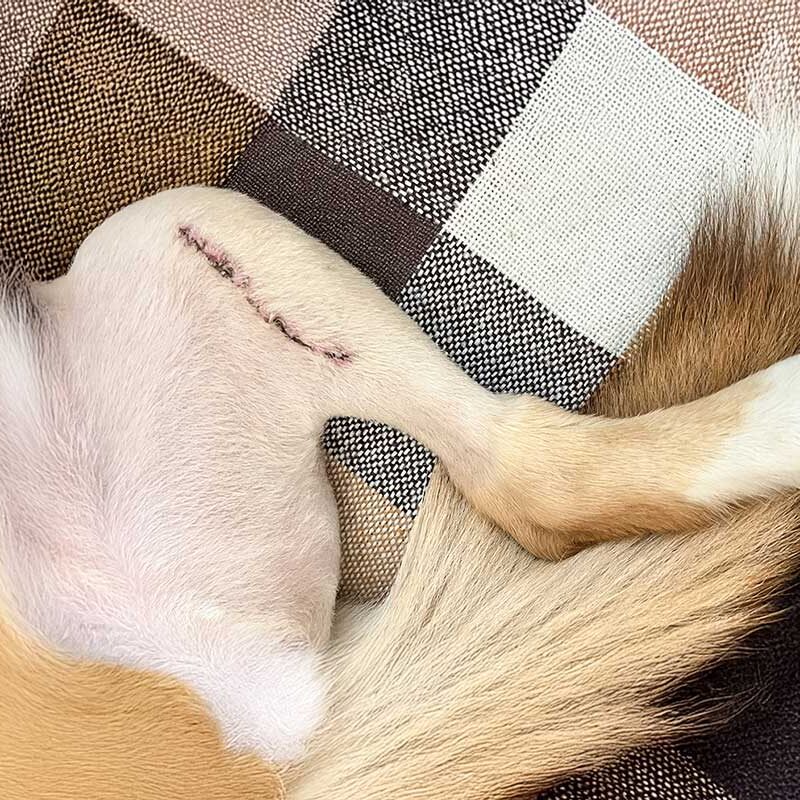
Tibial Plateau Leveling Osteotomy (TPLO) is a surgical procedure commonly used to treat cranial cruciate ligament (CCL) rupture—often called a “torn ACL” in dogs. The CCL is a key ligament in the knee (stifle) joint that stabilizes the joint and prevents the tibia (shin bone) from sliding forward in relation to the femur (thigh bone). When the ligament tears, the result is knee instability, pain, lameness, and the risk of developing debilitating arthritis.
How TPLO Surgery Works
Unlike procedures that attempt to repair or replace the damaged ligament, TPLO changes the biomechanics of the knee joint to eliminate the need for the CCL. The surgery involves:
- Measuring the Tibial Plateau Angle (TPA): Pre-surgical radiographs (X-rays) determine the slope of the top of the tibia and how much it needs to be rotated during surgery.
- Osteotomy (Bone Cut) and Rotation: A specialized saw makes a precise, curved cut in the top of the tibia. This section, which includes the tibial plateau, is rotated to flatten the angle. Flattening the slope prevents the tibia from sliding forward when the dog bears weight, eliminating the need for the CCL.
- Stabilization: A metal plate and screws secure the bone in its new position while it heals. These implants typically remain permanently in place.
- Meniscal Assessment: The medial meniscus, a cartilage cushion in the knee, is examined during surgery. If damaged, the torn portion is removed.
Why Choose TPLO Surgery?
TPLO is often considered the “gold standard” for treating CCL ruptures, particularly in large and active dogs. Benefits include:
- Superior Stability: TPLO provides long-term joint stability by addressing the underlying biomechanics of the knee.
- Faster Recovery: Many dogs begin using the operated leg within 24–48 hours. Most return to normal or near-normal activity within three to six months.
- Slowed Arthritis Progression: Stabilizing the knee helps delay the development of osteoarthritis.
- Broad Applicability: While beneficial for all dogs, TPLO is especially effective for large breeds and active dogs, whose weight and activity place extra stress on the knee.
Post-Operative Care and Rehabilitation
The success of TPLO surgery relies heavily on proper aftercare:
Strict Activity Restriction: Limit activity for 8–12 weeks. Use a crate or small room to prevent running, jumping, or climbing stairs. Allow only leashed bathroom breaks and slow, controlled leash walks to encourage limb use.
- Pain Management and Incision Care: Give all prescribed medications as directed. Check the incision daily for redness, swelling, discharge, or odor. Keep the area clean and dry. An Elizabethan collar (E-collar) may be needed to prevent licking.
- Physical Rehabilitation: Begin with passive range-of-motion exercises, progressing to controlled walks, balance work, and hydrotherapy. Work with a certified canine rehabilitation therapist or your veterinarian for a tailored plan.
- Weight Management: Keep your dog at a healthy weight to reduce stress on the healing joint. Discuss diet changes with your veterinarian.
- Follow-Up Veterinary Visits: X-rays and check-ups are essential to monitor bone healing and guide rehabilitation.
Potential Complications
Although TPLO has a high success rate, possible complications include:
- Surgical site infection
- Implant failure or loose screws
- Delayed bone healing
- Bone fissures
- Excessive bleeding
Following your veterinarian’s instructions and attending all follow-up appointments greatly reduces these risks.
Long-Term Outlook
Most dogs regain excellent function after TPLO surgery, resuming normal activities with greatly reduced pain. Maintaining a healthy weight, providing regular low-impact exercise, and using joint supplements (as advised by your veterinarian) can help support long-term joint health and mobility.
Recent Posts
About Us
Knox Veterinary Surgery provides advanced orthopedic, soft tissue, and exotic pet surgeries right in your practice, making care easier for you and your clients. Serving Tennessee and surrounding states, we deliver skilled, compassionate care in a familiar setting.
